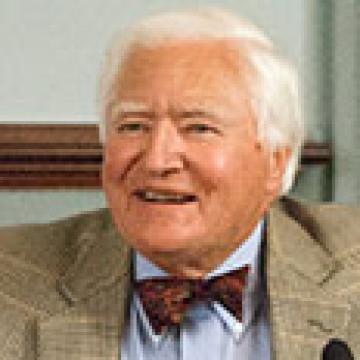Millard Fillmore: Domestic Affairs
When Zachary Taylor became ill on July 4, 1850, Millard Fillmore knew that the President was dying. When the President finally passed away, Fillmore passed a sleepless night, brooding over what lay ahead. The nation was embroiled in a sectional crisis of the first order, and all eyes would be on the new President. At noon the next day, he took the oath of office in the Capitol and left without giving a speech.
Compromise Choices
Fillmore's views on the all-encompassing slavery issue were markedly different from his predecessor's, and everyone in Taylor's cabinet knew it. Days before the President's death, Fillmore had bluntly told Taylor that if the Compromise of 1850 came to a vote in the Senate, he would cast his vice presidential tie-breaking vote to pass it if necessary. The cabinet, who had barely spoken to Fillmore up to this point, saw the writing on the wall and unanimously resigned; the new President curtly accepted them all. In days, America was governed by an entirely new order. Fillmore appointed to his cabinet Whigs who shared his pro-Union, pro-compromise views.
His longtime ally Henry Clay, aged and exhausted, readied himself for a final battle in Congress. At the end of July, not one month since Taylor had helped stall the compromise, Senator Clay introduced a modified omnibus combination of bills that comprised it. Fillmore pressured Congress to consider the original bill rather than the watered-down version. The angry tone of the national debate increased. In Congress, forces for and against slavery fought over every word of the bill. Both sides chipped away at the bill's provisions, and support for it collapsed, much to Fillmore's deep disappointment. Clay, wasted by the struggle, left Washington, D.C. A new player, from the opposing party, entered the fray. Stephen Douglas, age thirty-seven, had headed the committee charged with partitioning new American territories while serving in the House. Elected to the Senate in 1847, he now headed its Committee on Territories.
Instead of fighting one great battle, Douglas would fight five smaller ones. The compromise was reworked into a quintet of bills, with each having just enough support from one section of the country or another to assure passage. One by one, the bills squeaked through Congress. As a result, Texas settled its border dispute with New Mexico and received $10 million from the United States as compensation for conceding territories. California gained statehood as a free state. New Mexico and Utah were granted territorial status, without specifying any policy on slavery for either, affirming the principle of popular sovereignty in deciding the issue (i.e., local determination). The Fugitive Slave Law, which would later provoke rancorous debate, occasioned almost no debate in the Senate or the House and passed with surprising ease. The final bill involved the nation's capital itself. Slave trading, but not slavery itself, became illegal in the District of Columbia. Congress worked well into the fall, in its longest session to date. Fillmore signed the bills, considering their passage a triumph of interparty cooperation that had kept the Union intact.
Public Reaction
Many Americans, however, did not see it that way. For those with strong feelings about slavery, the compromise seemed to offer something for everyone to dislike. Northern abolitionists were enraged by the Fugitive Slave Law, and several states subsequently passed laws prohibiting its enforcement. Southern proslavery forces, meanwhile, were dismayed by the restrictions on the practice in California and the District of Columbia. They also doubted the government's commitment to enforce the Fugitive Slave Law.
Fillmore struggled to keep these disparate factions appeased. Responding to Southern pressure and secession threats, he decided to vigorously enforce the Fugitive Slave Law. In 1851, a Maryland man combed Pennsylvania, hunting down runaway slaves that he owned. One of these slaves killed his master when found by him. The incident led Fillmore to support treason charges against over forty persons—both black and white—supposedly connected with the killing. A Supreme Court judge, however, ruled that opposition to the Fugitive Slave Law did not qualify as a treasonous act. Later in his administration, Fillmore sought to enforce the law in his native New York, ordering the apprehension of an escaped slave hiding there. A band of armed abolitionists rescued the slave from authorities, however, and attempts to prosecute any of them failed.
Incidents like these convinced many Northerners that Fillmore was appeasing the South. Antislavery politicians made considerable inroads to power at the state and local levels. To counteract Northern uneasiness, Fillmore ordered General Winfield Scott to strengthen forts in South Carolina to give Southerners second thoughts about possible secession schemes. Meanwhile, legislatures in Northern states passed "personal liberty" laws which forbade state judges to assist slaveholders and extended to blacks the right to trial by jury in these disputes. Unfortunately, by trying to please everyone, Millard Fillmore, it seemed, could please no one. The Whig Party began to fall apart from the strain of all the conflicting points of view on slavery.
